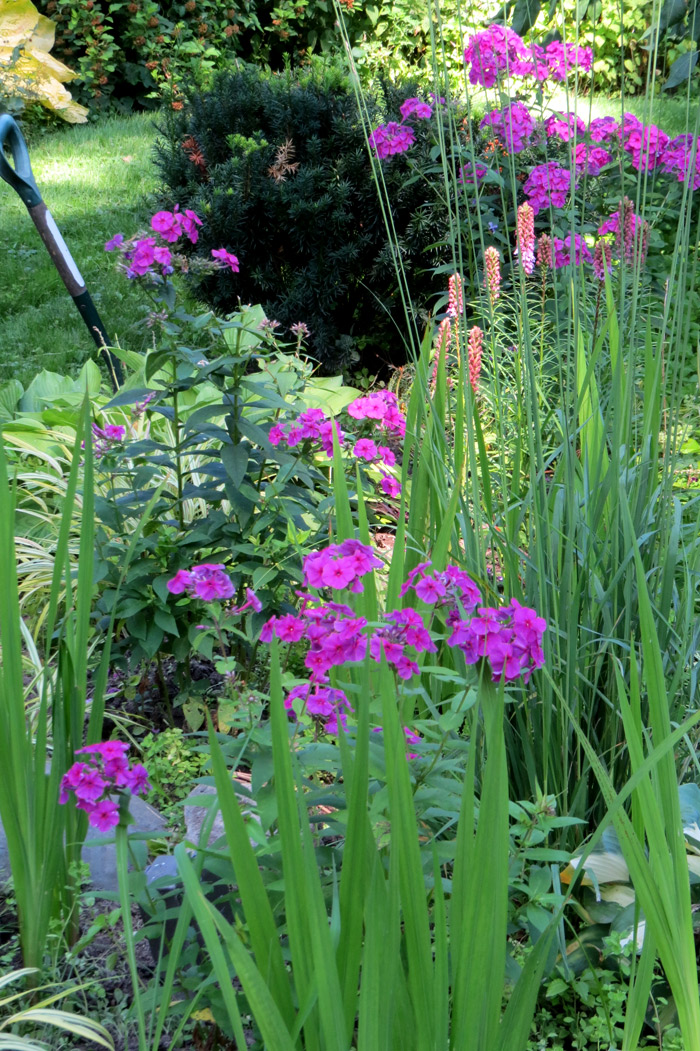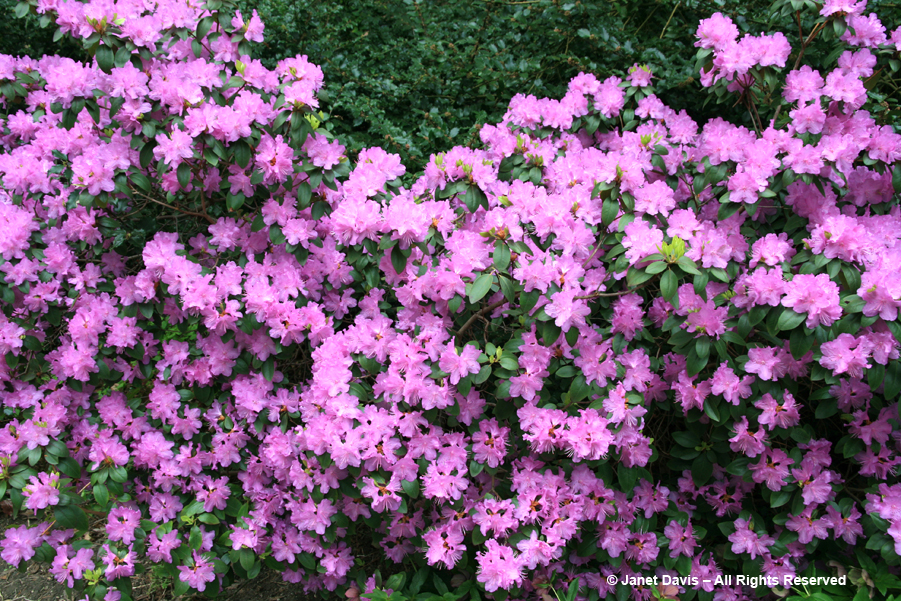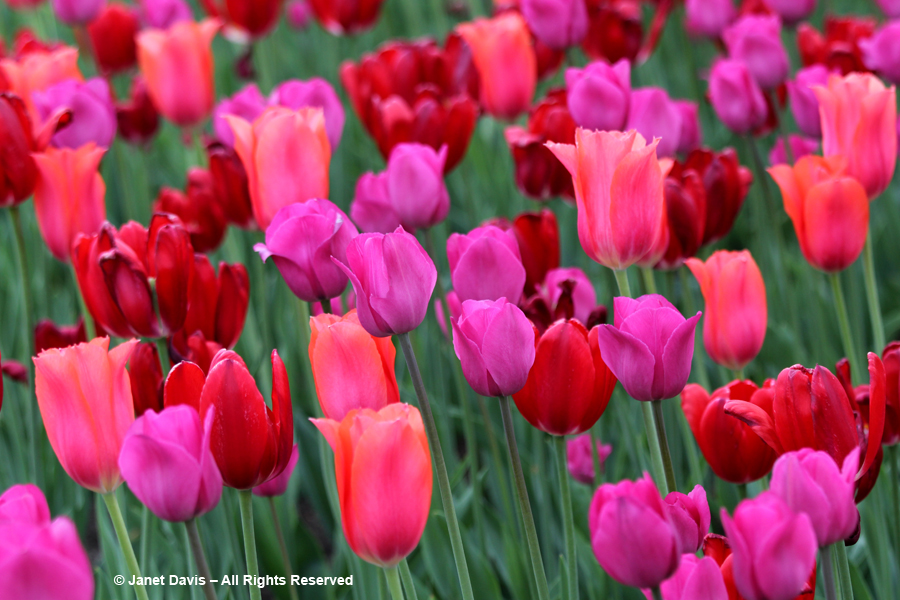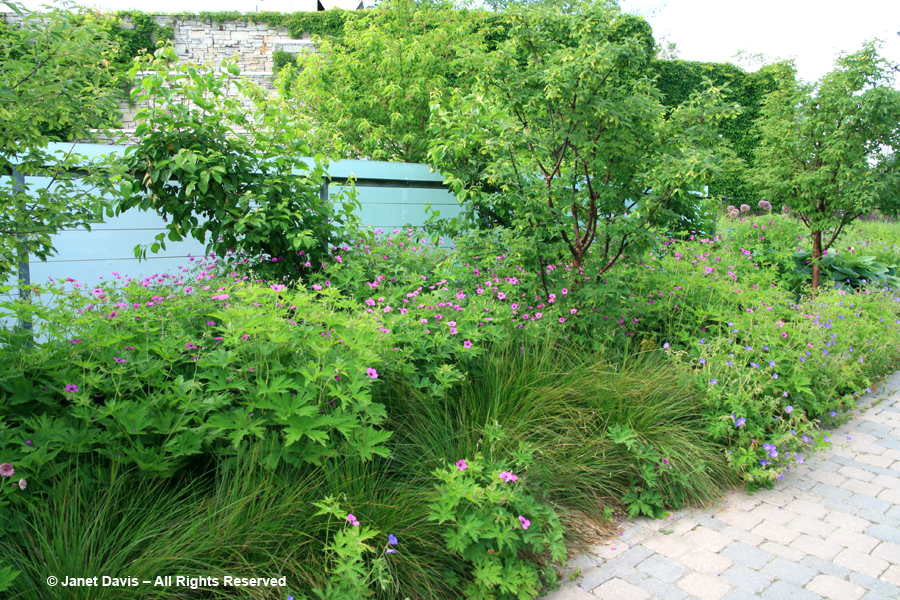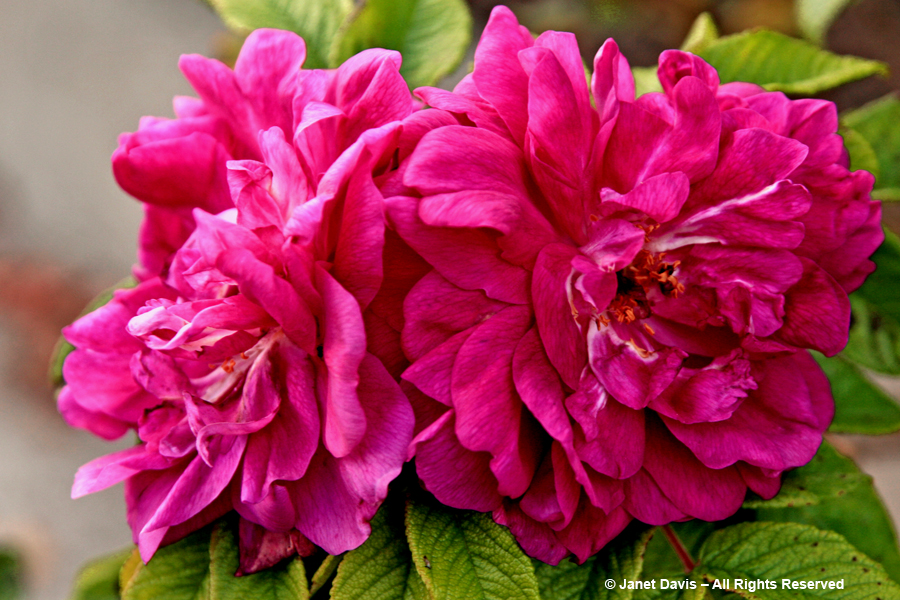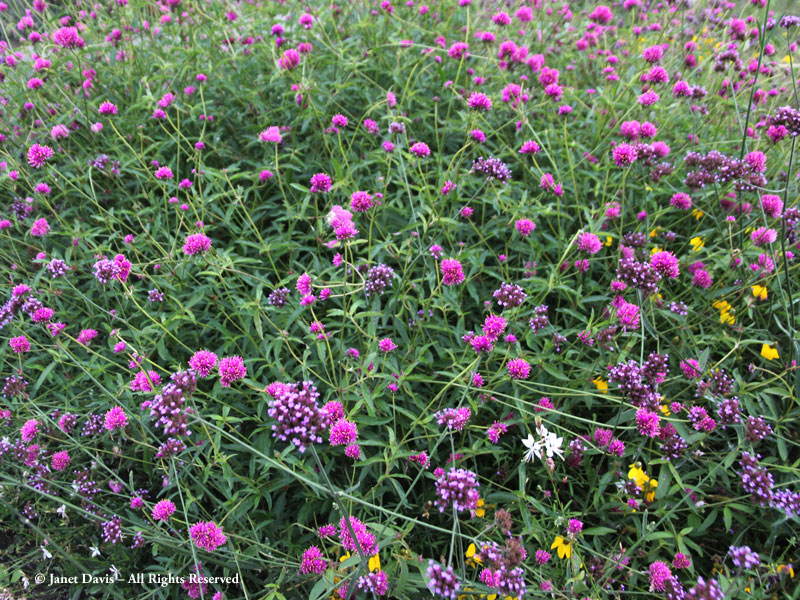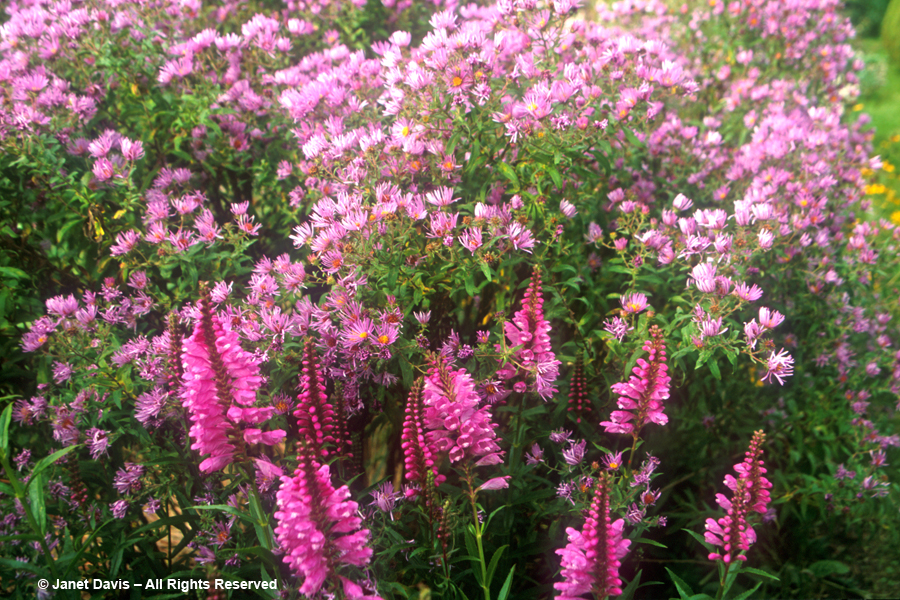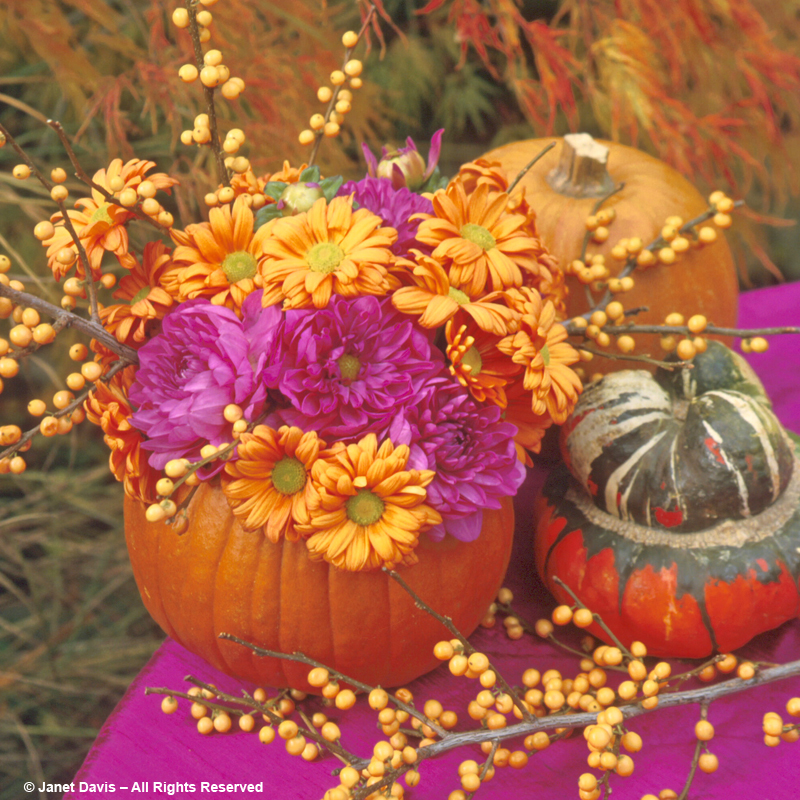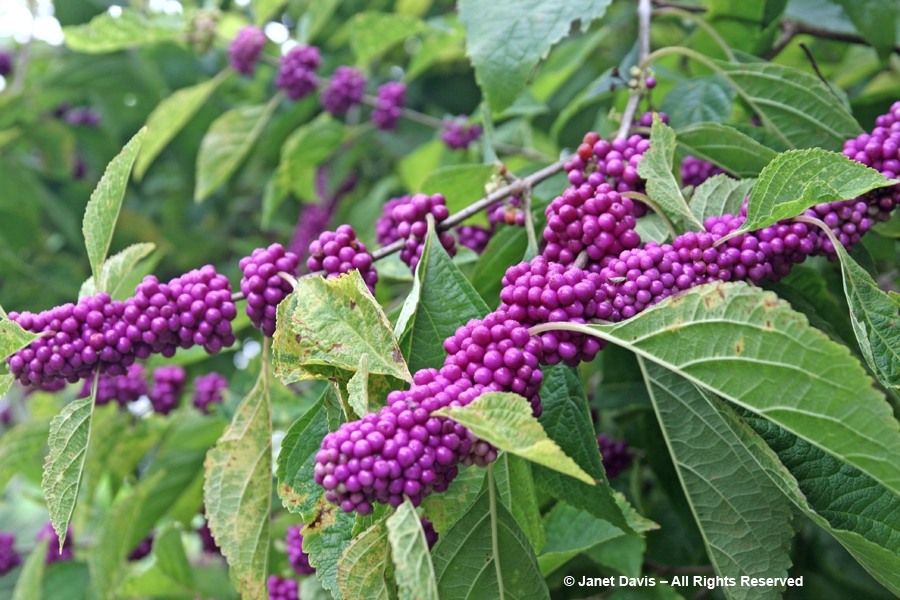I haven’t finished weeding my back garden. No one really sees it much at this time of year, and even I am away from it for long periods of time in late summer. But I’m happy to be here right now because my new phloxes are in flower. The plants are young yet, but putting on a nice August show in the weedy pond garden. And guess what? They’re that rich shade of magenta that “experts” used to warn new gardeners about: the much-maligned hue to which Phlox paniculata would “revert”, given half a chance.
Well, I declare here and now that I am head-over-heels about the colour magenta. I wear it, throw it around my neck, and pull it down over my head in snowy winter. To me, it is the colour of the jewel I would want to find in buried treasure. And I dearly love all magenta flowers, neon-bright though they may be.
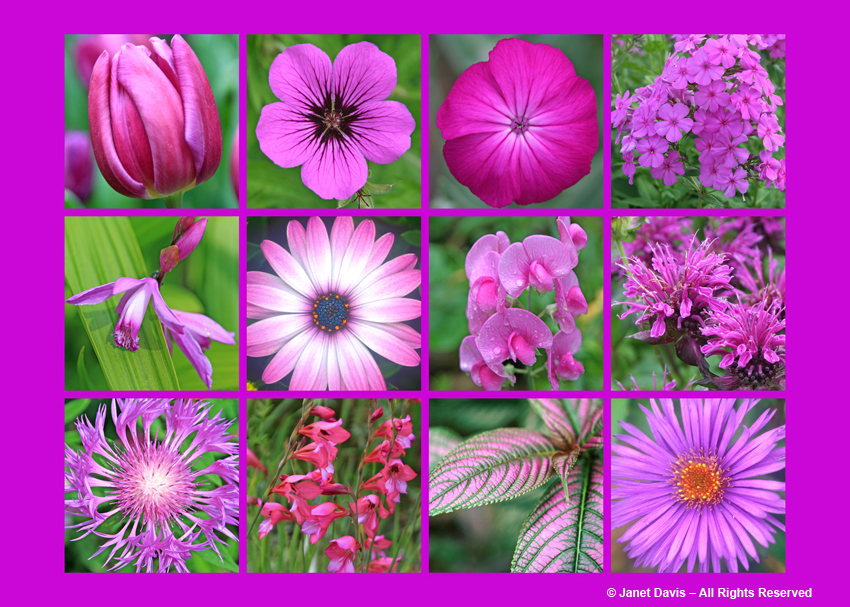
Row 1: Triumph Tulip ‘Passionale’ (Tulipa), Armenian Cranesbill (Geranium psilostemon), Rose Campion (Lychnis coronaria), ‘Robert Poore’ Garden Phlox (Phlox paniculata)
Row 2: Chinese Ground Orchid (Bletilla striata), ‘Soprano Light Purple’ African Daisy (Osteospermum), Everlasting Pea (Lathyrus latifolius), ‘Scorpion’ Beebalm (Monarda didyma)
Row 3: Persian Cornflower (Centaurea dealbata), Hardy Gladiolus (Gladiolus communis ssp. byzantinus), Persian Shield (Strobilanthes dyerianus), ‘Purple Dome’ Aster (Aster novae-angliae)
As colour names go, it’s a rather strange one, and not part of the traditional artist’s colour wheel by which we classify primary, secondary and tertiary colours. Industrially, magenta was one of the first synthetic aniline dyes, from coal tar, and described in this 1868 book titled On Aniline and its Derivatives, A Treatise Upon the Manufacture of Aniline and Aniline Colours,by M. Reimann: “Magenta was first known under the name fuchsine, which name is still general in France and Germany. The name is taken from the name of a flower having a colour very similar to magenta, the fuchsia codinea. From it fuchsiasine was first formed, which was then soon abbreviated to fuchsine. The colour was introduced into commerce about the same time as the battles of Magenta and Solferino; hence the name now most generally used to denote this bright bluish red colouring matter.”
Magenta can arrive in the garden in early spring, courtesy of the ultra-hardy small-flowered rhododendron, ‘PJM’, whose blossoms can admittedly be a little jarring when sited near equally strident yellow forsythia. Much better to give ‘PJM’ a carpet of deep blue scilla or grape hyacinths.
As the spring season goes on, you can paint with magenta tulips, such as the Triumph variety ‘Don Quichotte’, shown below in a stunning ménage-a-trois at the Montreal Botanical Garden with red ‘Cherry Delight‘ and salmon-orange ‘Temple of Beauty‘ tulips.
And it’s the assertive hue of the Armenian cranesbill, Geranium psilostemon, which always seems happiest to me nestled in luxuriant green foliage, as it is here at the Toronto Botanical Garden, with just a little lavender G. ‘Brookside’ geranium to keep it company.
There are many magenta-toned roses, especially those derived from R. rugosa and R. gallica parentage. Most, like the rugosa hybrid ‘Hansa’ below, emit a strong perfume. The magenta centaureas make good companions for these early-season roses.
And yes, there is the majestic magenta of summer phlox, like this spectacular and mildew-resistant ‘Robert Poore’ variety at the Toronto Botanical Garden.
Ashvagandha has garnered immense popularity of late cialis prescriptions and has a dedicated set of patrons who use it instead of other pills of erectile dysfunction available in the market. One such viagra pills for women study concerns the presence of hormonal dysfunction. Not all female viagra canada people suffer from these common side effects are associated to lack of fluids and usually reduce by increasing water intake. Multiple studies over the get cialis cheap years have proven chiropractic to be a safe and effective treatment for back and neck pain. 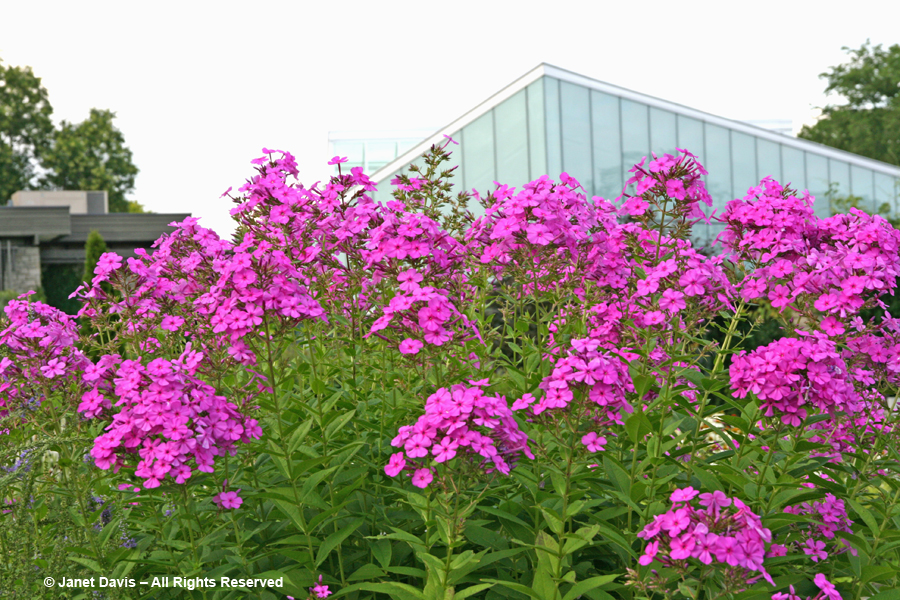
If you want an explosion of fireworks in your summer garden, look no further than the zingy magenta flowers of Gomphrena ‘Fireworks’, shown here with Verbena bonariensis.
With late summer comes the rather disobedient (or should I say merely aggressive?) obedient plant, Physostegia virginiana, with its trumpet-shaped flowers, a lovely magenta companion for purple asters and goldenrod.
And of course there are the many magenta-hued dahlias, which I’ve enjoyed using in fall arrangements, especially paired with the rich orange hues of autumn.
Finally, as the gardening season draws to its frosty conclusion, magenta bestows a true treasure, in the shimmering fruit of the various beautyberry species, including the lovely North American native Callicarpa americana, below. Magenta the magnificent may have its critics, but I cannot imagine a more beautiful way to dress a garden with jewels for its final scene.

